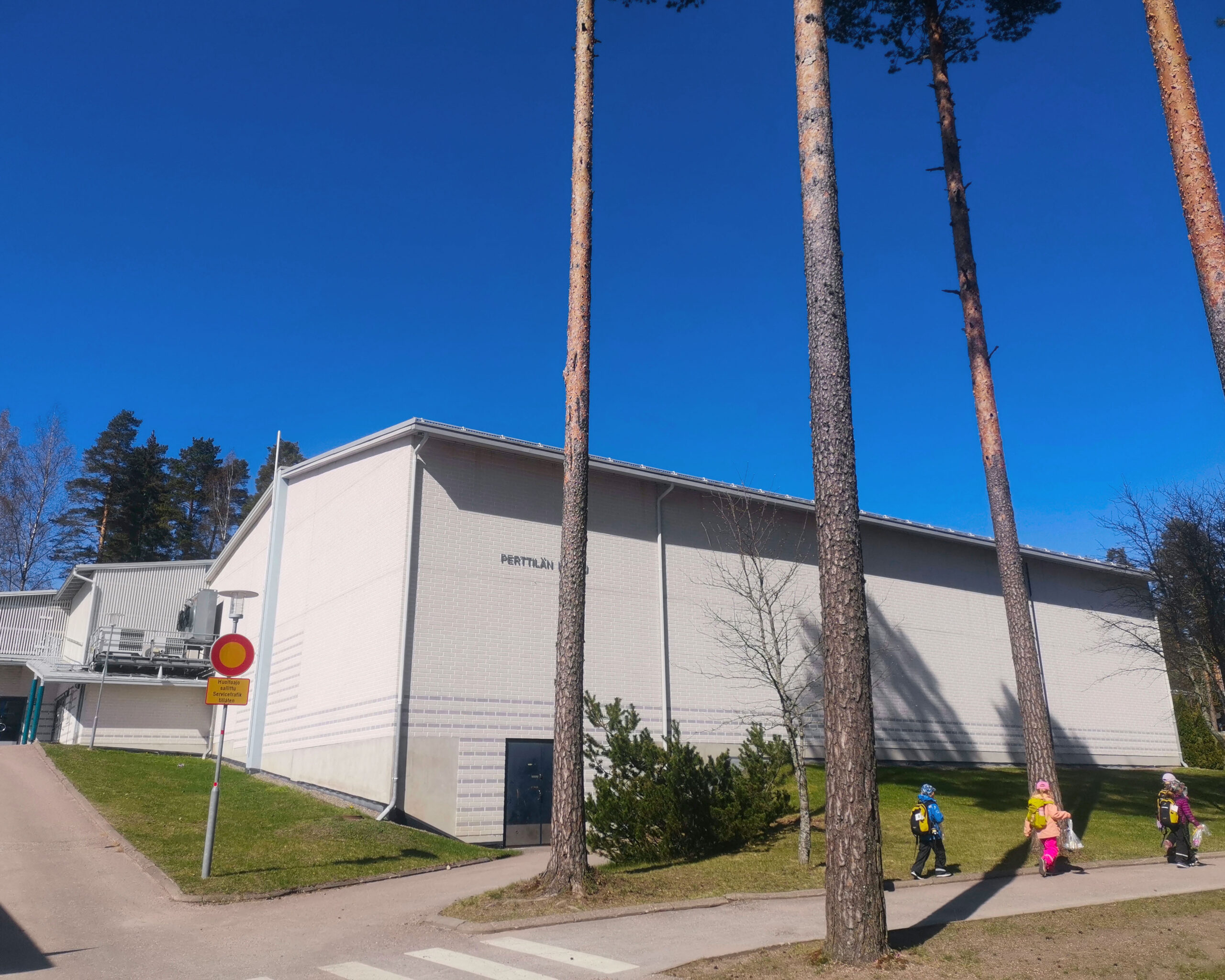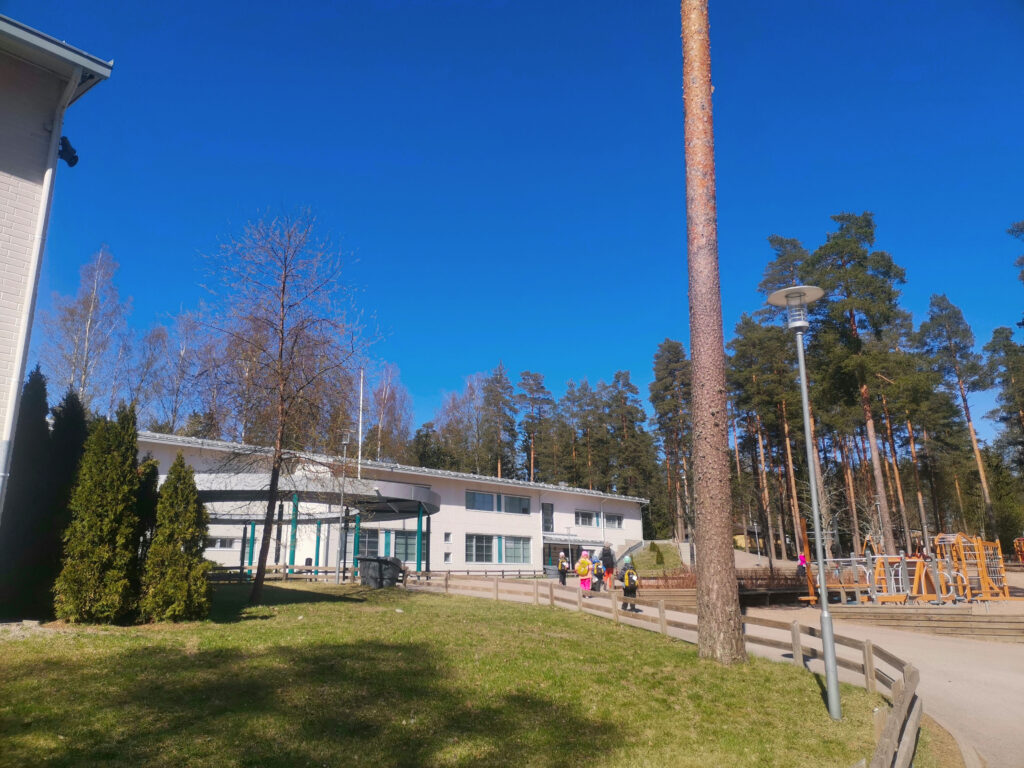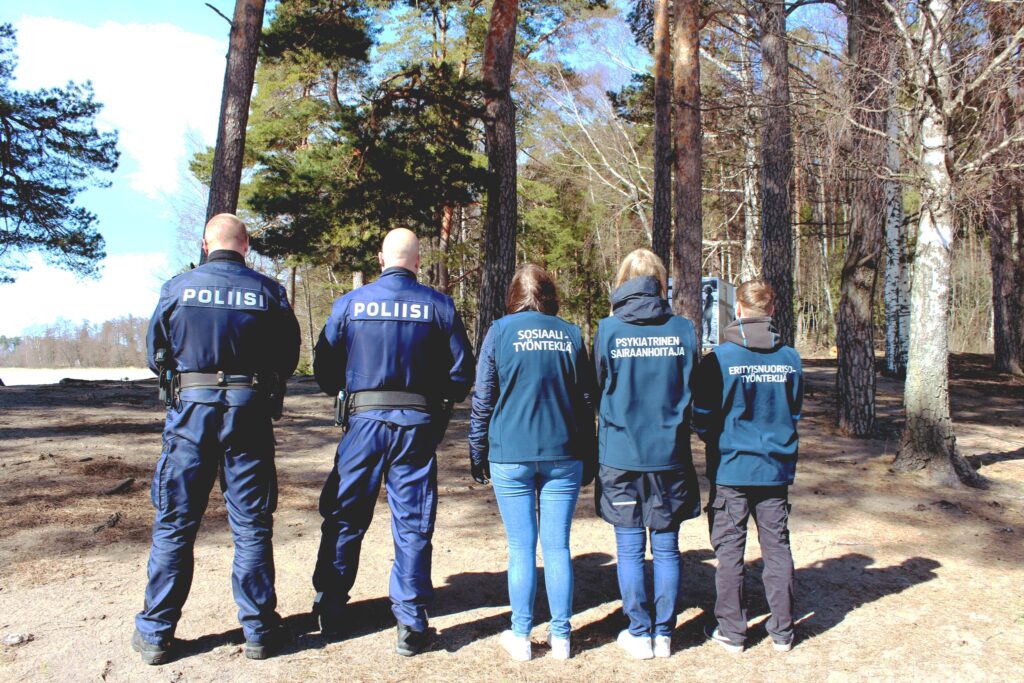What to do when bullying won’t stop, and the school just wants to wait and see?

Pekka’s experience is not the only case of bullying in Perttilä school. PHOTO: OKSANA CHELYSHEVA
Oksana Chelysheva
Published 23.05.2024 at 12:29
Updated 23.05.2024 at 12:29
Once the bullies caught Pekka at a bus stop near the school. They had brought a belt with them.
They didn’t want to use it themselves. Instead, they stopped two other boys, and offered them a bag of candy, if they would hit Pekka with the belt.
One of them did, and the other was forced to film the scene with his mobile phone.
Eventually, Pekka was able to escape. He called the police, who arrived shortly and managed to catch the bullies, who were still hanging around.
The police took their phones, found the video that the bullies had already uploaded to social media and deleted it.
Mother’s cry for help
The suburb of Perttilä on the outskirts of Lohja looks peaceful. It is home for some 1200 households living in detached or semi-detached houses. Perttilä has its own Wikipedia page that lists a school, kindergartens, and a sand football field among its attractions.
Pekka‘s parents have been living in Perttilä for 17 years. Their house is a few meters from the elementary school where their three children study.
The school is a comforting building with a kindergarten next to it, surrounded by playing grounds. The school Facebook page is mostly concentrated on events in the school gym. No problems.
Anu, Pekka’s mother, who is a nurse at local hospital, sits in front of a kiosk near the school. She is a sporty-built tall woman with brown hair. She speaks with a confident voice.
“I hardly ever lose my nerve, but now with the summer approaching, I am really worried about my kids’ safety.”
Little more than month before, in the beginning of April, her patience had run out.
Bullying of her son, Pekka, had been going on for over a year. Many times, Anu and her husband had demanded the school to act. Finally, the school had organised a meeting to discuss the matter.
But it had been a disappointment. The principal, Virpi Koskelainen, didn’t find time to attend the meeting. The family only received a message through the Wilma messaging service stating that the boys involved in bullying would be kept separated from each other.
On a phone call afterwards, principal Koskelainen told Anu that the situation would be discussed further, and decisions taken in May – over a month later.
Anu felt distraught, helpless. On April 9 she posted a desperate plea for advice on Facebook.
How to motivate the school to act to stop her son´s bullying, she asked. Especially, when part of the bullying took place during the free time and the school staff denied any responsibility for the behaviour of the pupils outside the school.
Ongoing bullying takes its toll
Pekka joins Anu at the kiosk. The ten-year-old has taken a lot after his mother, sporty, slim, and tall. Dressed in football gear, all ready for the practice. Anu is going to take him to the training ground.
“There is a small football field by the school, but he cannot play there because of the bullies”, she explains.
When asked how he is feeling, Pekka is silent for a while, then looks straight into eyes and says:
“I feel bad. I was offended again.”
It had happened just a moment ago. The bullies had waited him to appear on the lane leading to his home. Then they had chased him, Pekka tells.
“They stopped when I reached the yard of my house, but they were shouting at me, ‘Come here. We have an issue to discuss”.

It has been like this for over a year. Insults, threats, and use of physical violence have been recurring. The size of the bullying group has varied. Sometimes there have been as many as 15 boys.
In January, Pekka was hit with snowballs thrown by the bullies so badly that medical care was required. Pain, tinnitus and hearing loss, the doctor wrote on his medical record.
Pekka’s parents have received phone calls from their neighbours when they have seen Pekka being bullied through their windows.
Sometimes the violence has been stopped by Pekka’s father. At least once, a random passer-by has intervened in the situation.
The school wants to wait and see
From the beginning, Pekka has asked for help. When the bullying started, he told his parents, as well as the teachers.
“That’s what we are always told to do”, he explains.
Pekka’s parents have been in continuous correspondence with the school mainly through Wilma. They have told the teachers that Pekka is afraid of going to the school because of the bullying and informed about bullying cases after school and during weekends.
Since the bullies were from Pekka’s class, in March his parents asked, if Pekka could be transferred to another class, where his twin sister already studies.
In her response, principal Koskelainen wanted to wait until May and “see how the spring goes”. The school staff also wrote that they’ve discussed about the bullying and that the students’ stories about the matter differed.
On April 22, Anu turned to the school because Pekka had started to have panic attacks. The family tried to ask the school doctor to make an official referral to a child psychiatrist.
The school social worker started with an expression of sympathy towards Pekka’s situation but recommended the family to contact the emergency room for doctor’s assessment, “if the situation is acute”. The school nurse refused to make a referral, because “the school doctor currently only does general health checks”. They again sent the family to seek help from any family counsellor as if it was a family matter.
The principal Virpi Koskelainen refused to comment on an individual student’s matters.
On an email, she wrote: “the school uses different methods and actions to prevent and stop bullying. The school does not do this work alone, but in cooperation with homes and various cooperation agencies. Our desire is that every child and adult working in the school should be able to do their work in peace”.
Bullying is not a force of nature
According to Satakieli’s sources, the same group of bullies have been after also other people than Pekka. And it’s also not the first time bullying causes problems in Perttilä elementary school.
Juliia, 16, attended the school a couple of years ago. She was bullied through her sixth grade: insults and offences in a daily basis by a group of students.
“My teachers saw I was being insulted, but they never interfered,” she tells now. “It was only at the very end of the school year when I turned to a teacher and got some help. That teacher no longer works there.”
Juliia would have wanted the teachers to be more proactive in dealing with the bullying and not to wait until a child asks for help.
“Stand up for the children who are bullied. Do it when you see or hear anything that may offend, hurt, or traumatize the child.”
The unwillingness of the schools to admit the bullying is a usual phenomenon, says Margit Sjöroos, who runs an initiative to deal with bullying in schools and in workplaces.
“But bullying does not go away if you deny it. These are all manifestations of a deep system problem”.
Sjöroos thinks that the core problem is that instead of dealing with the problem, teachers just try to get rid of the child who is bullied.
“It creates an impression that all are against me”.
She proposes that parents should have an opportunity to call specialists for individual interventions with schools. Currently there’s no such mechanism.
The police – the only actual help
When asked about who he can still rely on, Pekka answers without hesitation.
“My family and the police.”
In the world of Pekka, the police are represented by senior constable Jani Salminen. The trust began to form, when Salminen gave a lecture in Pekka’s school about bullying being a criminal act.

Salminen has responded Pekka’s voice messages even in the evening. He even visited Pekka before leaving for vacation to tell that he would be checking his email.
“We see a huge difference between the attitude of the school authorities and the police”, Anu says. “Officer Salminen’s every step proves his determination to solve a problem. He always does what he says.”
Senior constable Jani Salminen explains that he cannot comment on individual cases. However, he is willing to elaborate, how the police in general acts in situations related to bullying.
According to Salminen, it is primarily a task of the school to intervene in school bullying. The police will step in if the bullying meets the definition of criminal offence. Even in those cases, the police cannot control or direct how the school acts.
If the suspect is under 15 years of age, the police handle the situation together with the school, parents and if needed, with the social service authorities. According to Salminen, the cooperation between the police and schools mostly goes well.
Second meeting brings some changes
On May 7, another meeting was held at the school. This time, in addition to Pekka, his parents and the school principal, also the police were present. The discussion circled around the parents´ and the boy´s numerous requests to move Pekka to a different class, away from the bullies.
Since the meeting in April, the situation had somewhat improved inside the school. However, the bullying outside the school building had gotten much more frequent.
“Still, it looked as if principal Koskelainen’s main goal was to force us to accept, what she had decided”, Anu says. “If we had been less confident, or if Pekka had not just had enough, she would have succeeded.”
In the end, it was decided that Pekka would be permitted to attend part of the lessons with his sister’s class. The principal called the move temporary and said that she wanted to see how it would change the situation.
Pekka was also permitted to stay inside during recess. The boy insisted on doing so, because he didn’t believe that the adults would react, should anything happen.
Anu thanks constable Salminen, who according to her, helped to persuade the rector to make the decision. The police also undertook the task of talking to the bullies individually.
One week later, Pekka attended his sister’s class for the first time.
“On that day, Pekka got back home in a happy mood”, Anu tells. The next day Pekka participated in a chess tournament together with the classmates.
However, the decision if Pekka will permanently be moved to his sister’s class, won’t be made until autumn. Anu doesn’t understand the wait.
“I do not understand what else they are going to think over after they realize that Pekka´s new class is right for him”.
The last day of Pekka’s spring semester is June 1st.
The names of Pekka, Anu and Juliia have been changed to protect their privacy.